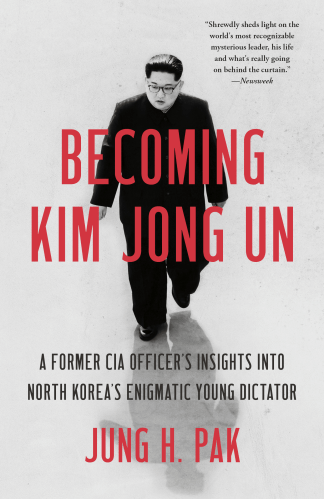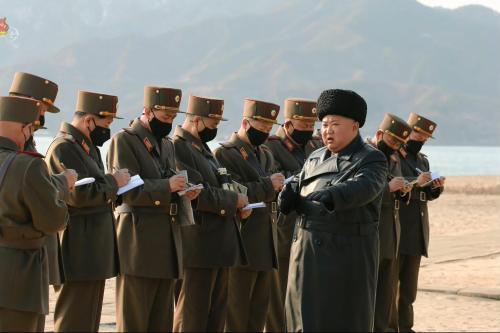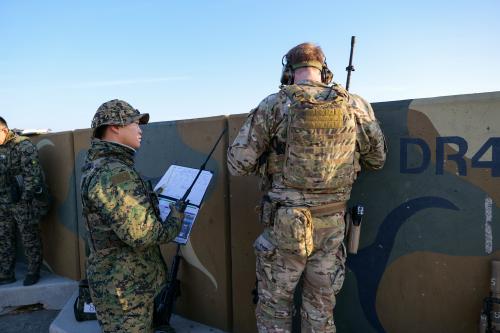A master at social distancing long before the term came to dominate headlines, North Korea has been tightly controlling the movement and daily activities of all 25 million of its residents for decades. In order to control the spread of COVID-19, the Democratic People’s Republic of Korea (DPRK) regime leveraged this capacity immediately in January — reportedly implementing an iron-clad quarantine for over 8,000 people. The DPRK also cancelled flights, tightly inspected travel by foreign diplomats, and even shut down its shared border with China, its economic lifeline.
In light of the devastating nature of COVID-19, there may be a face-saving opening to reinvigorate U.S. diplomatic engagement with North Korea. Even if the DPRK regime rebuffs attempts to restart talks on denuclearization amid the COVID crisis, the U.S. should attempt to better understand and bolster the DPRK’s medical capabilities in the short and medium term. Such efforts could prevent the country from becoming an opaque disease reservoir in Asia. In the long term, U.S. assistance — through robust medical exchanges and funding a large-scale international program — would help limit future pandemics, enhance life expectancy for North Korean citizens, foster goodwill, and build credible trust to strengthen future bilateral talks.
A Cry for Help?
Despite its continued claim that it has zero cases of COVID-19, the regime has acknowledged its troubled health care system, and North Korean officials have been quietly requesting help from their international interlocutors. Indeed, experts assess that basic medical equipment and supplies as well as trainings for emergency care providers and surgeons are sorely lacking, and half of the country’s health facilities lack sufficient access to water and sanitation, according to UNICEF.
Since January, the regime discreetly reached out to China, Russia, non-governmental organizations, and U.N. agencies for equipment to limit COVID-19, and according to media, received hundreds of donations of personal protective equipment, other medical supplies, and 1,500 testing kits from Russia. In a reported letter President Trump sent to Kim Jong Un in March, the U.S. may also have volunteered support, although there has been no confirmation the DPRK accepted such an offer.
Steps for the U.S.
There are three steps the United States should consider, once the coronavirus verifiably abates worldwide.
First: A critical subset of people-to-people exchanges, the State Department should continue to approve U.S. medical experts to travel to the DPRK to conduct trainings, build capacity, and emphasize modern medical standards. State Department spokesperson Morgan Ortagus’ February 13 statement suggest the department is willing to continue approving special validation passports for U.S. doctors to travel to the DPRK, once it is safe to do so.
Second, the U.S. should begin to allow U.S. NGOs and universities to host small delegations of North Korean medical professionals in the U.S. to generate relationship-building and knowledge-sharing in both directions. No North Korean has been approved to travel to the U.S. — outside of U.N. and diplomatic travel — since 2016, likely due to increased bilateral tensions, as Keith Luse of the National Committee on North Korea told me.
Harvard Medical School’s Dr. Kee Park, who organized a two-week exchange trip to the U.S. for North Korean doctors in 2008, told me that dedicated, sustained exchanges could lead to increased transparency in North Korea through a greater level of integration with the international community and increased number and scope of cooperative projects on health. Having traveled to the DPRK numerous times since 2007, he stressed these exchanges also build goodwill between Americans and North Koreans.
Last, President Trump could make good on his reported letter to the DPRK by putting forward a significant contribution to a global initiative to scale up North Korea’s emergency and surgical care abilities and facilities. Such a program — best facilitated by an international organization with access to the DPRK — would need U.S. leadership in order to galvanize financial and technical support from international partners, long hesitant to step out of line of Washington’s maximum pressure strategy. This should be on the U.S. long-term agenda for 2021, as it works to manage COVID-19 within its borders in 2020.
The U.S. should require that the DPRK have skin in the game, contributing a percentage of what the project raises from other donors, as the North contributes towards a project funded by the GAVI alliance, which has helped vaccinate millions of North Koreans. The DPRK’s financial involvement will not only decrease moral hazard, but could lead to the DPRK allowing implementers more widespread access to the country to support the program’s success.
Obstacles and Logistics
To launch exchanges to the U.S., agencies would have to deal with visas, entry bans, Treasury licenses, and vetting to make sure these North Koreans have no specific links to weapons proliferation or terrorism. Concerns that the regime only selects loyal elites to participate in such initiatives could be mitigated by limiting participants without the relevant credentials to one person — an honorary delegate. This has been a successful compromise in past exchanges.
On large-scale assistance, allowing unrestricted monitoring of such aid projects is hardly the Kim Jong Un regime’s forte. The implementing agency would have to establish and fulfill comprehensive benchmarks and reporting requirements in order for the U.S. and other donors to write checks. If the regime contributes hard currency to the project — like with the GAVI project — this will strengthen its viability.
Strategic Implications
A multilateral program with broadly-sourced funds would eliminate North Korea’s ability to accuse the U.S. of using assistance only to achieve its own political goals. With appropriate monitoring, these initiatives would not conflict with U.S. and U.N. Security Council sanctions intended to restrict the DPRK’s ability to earn hard currency for its nuclear program. The U.S. would need to engage heavyweights China and Russia to support a large-scale medical program, emphasizing these efforts are separate from the pressure campaign. South Korea and even China would both support having a neighbor better able to limit the spread of infectious diseases. Working together on such a program could be a low-key way to strengthen the U.S.-South Korea alliance and rebuild U.S.-China cooperation post-pandemic.
The threat COVID-19 poses to the regime’s ability to govern, its economy, and its desired stature as a global player may have altered the regime’s calculus. Kim Jong Un could choose to return to the negotiating table at any moment. Building trust through these apolitical, medical initiatives could prove critical in strengthening the U.S. position as a long-term, credible negotiating partner.
The Brookings Institution is committed to quality, independence, and impact.
We are supported by a diverse array of funders. In line with our values and policies, each Brookings publication represents the sole views of its author(s).








Commentary
How US support for North Korea’s dire medical system could help build trust
April 20, 2020